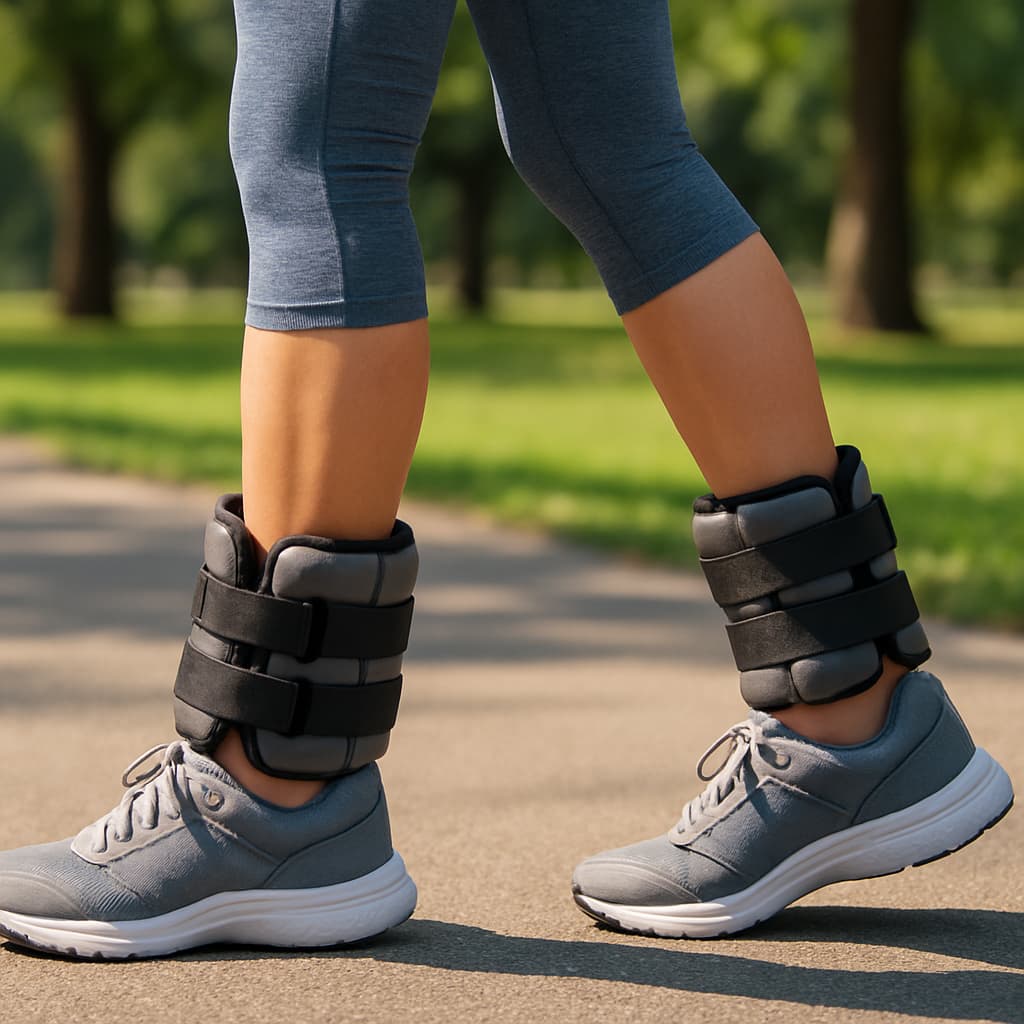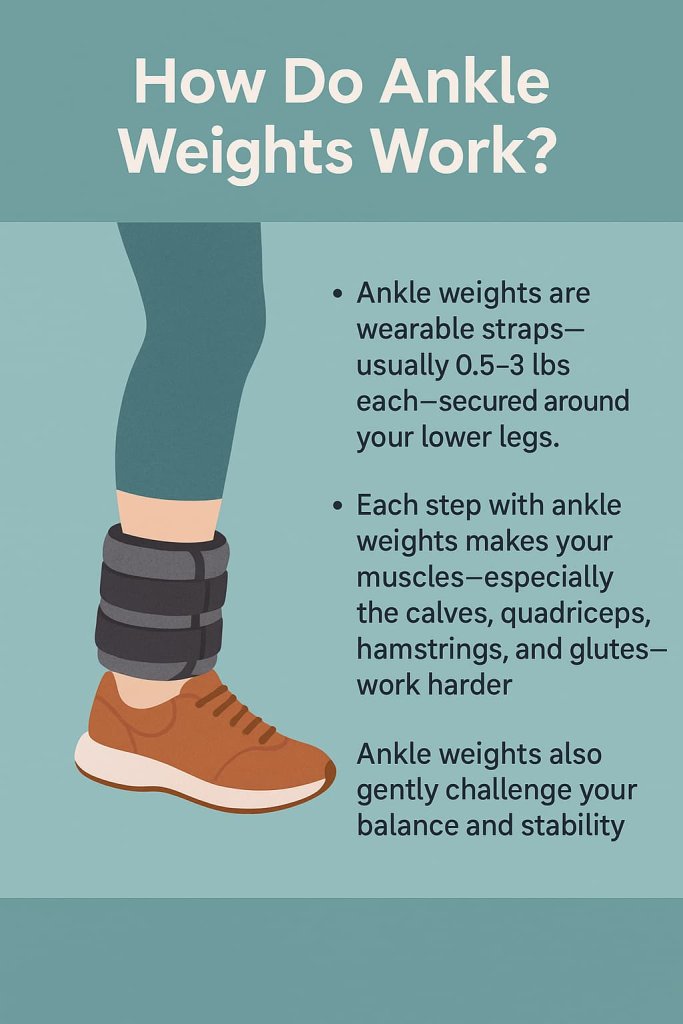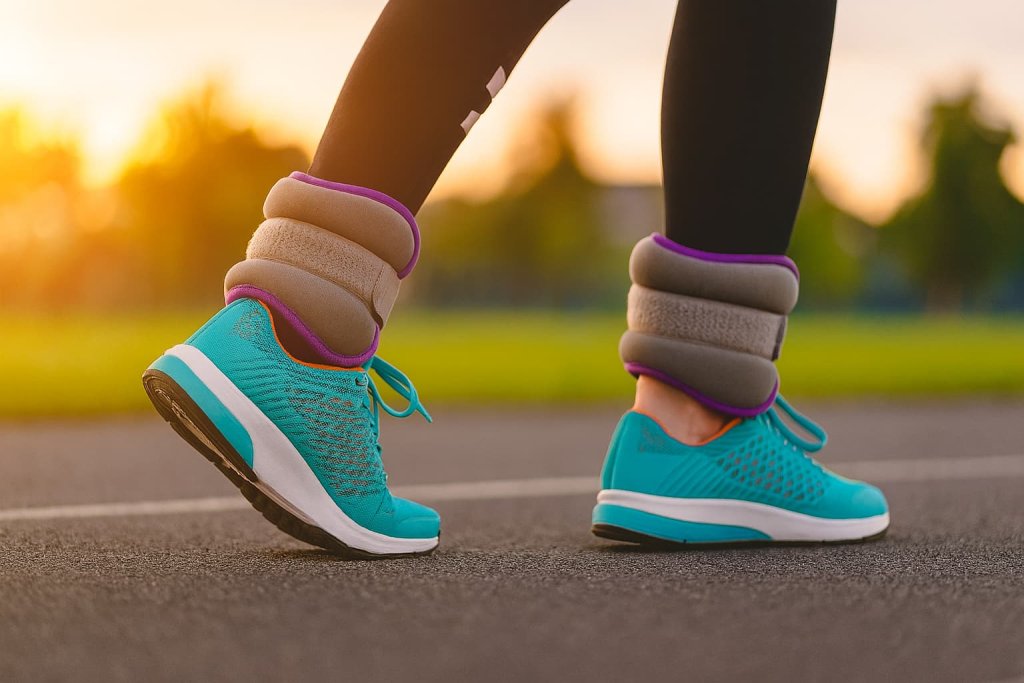Walking with ankle weights does work—to a point: it increases calorie burn, muscle activation, and lower-body strength, but must be done safely to avoid joint strain or injury. For anyone seeking an extra fitness boost without changing their routine, ankle weights can add measurable intensity to walks. But maximizing benefits (and minimizing risks) means knowing the latest science, how to use them, and what real people have experienced.

Understanding the right way to walk with ankle weights is vital for results. This guide covers research-backed benefits, potential drawbacks, how to get started, expert answers to common questions, and real-world success stories. You’ll finish with the tools and confidence to make ankle weights work for you.
How Do Ankle Weights Work?

Ankle weights are wearable straps—usually 0.5–3 lbs each—secured around your lower legs to provide extra resistance during walking, exercise, or rehab.
- Each step with ankle weights makes your muscles—especially the calves, quadriceps, hamstrings, and glutes—work harder.
- This added workload boosts muscle activation and increases your energy expenditure compared to regular walking.
- Ankle weights also gently challenge your balance and stability, since your body has to compensate for the extra load with every stride.
Practical Tip: Always secure the weights snugly but not so tight that they restrict blood flow or cause discomfort. Choose adjustable ankle weights so you can start light and increase gradually.
Research-Backed Benefits of Walking with Ankle Weights
1. Increased Calorie Burn & Workout Intensity
Fact: Walking with ankle weights burns 5–15% more calories per session compared to walking without weights. (University Hospitals, 2024)
- How: The extra effort to lift each leg raises your heart rate and overall exertion.
- Who benefits most: People who have already adapted to regular walking and need an extra challenge—without running or high-impact workouts.
Real-World Example: A 160-pound (73kg) person burns about 314 calories in an hour of brisk walking. With 2-lb ankle weights, this could rise to 340–360 calories per hour, especially on inclines.
2. Greater Muscle Activation
Ankle weights “wake up” more muscle fibers with every step.
- Your glutes, hamstrings, hip flexors, calves, and quadriceps work harder than in unweighted walking.
- A study in Verywell Health showed greater activation of stabilizer muscles, which helps with strength and balance over time (Verywell Health, 2024).
Practical Tip: Use ankle weights to level-up side leg raises, marching in place, or walking uphill—these moves emphasize hip and core engagement.
3. Improved Balance, Mobility & Bone Health
As we age, balance and stability become more important—and more challenging.
- Studies show older adults using ankle weights improve gait, postural stability, and knee joint proprioception (Healthline).
- The extra load is weight-bearing, so it may also help maintain bone density, especially in post-menopausal women or those at risk for osteoporosis.
Practical Example: In a 12-week study, seniors who walked with 1-lb ankle weights 3x/week saw better leg strength and improved results on balance tests, with fewer falls (NIH, 2022).
4. Support for Weight Loss and Functional Fitness
- Slightly increased calorie burn can help you maintain a calorie deficit for weight loss.
- Adding ankle weights helps develop functional leg strength for everyday activities like climbing stairs, rising from chairs, or hiking.
Tip: Pair ankle-weight walks with healthy nutrition and other exercises for best fat-loss results.
5. Convenience and Versatility
- Affordable: Most sets cost less than $25 and are easy to use anywhere.
- Portable: Take them on trips, to the park, or use at home while watching TV.
- Beginner-friendly: No gym required—just strap them on and go!

Drawbacks and Risks: What You Need to Know
1. Joint Stress and Injury Risk
Warning: Too-heavy weights or poor form can put extra stress on ankles, knees, hips, and even the lower back. This may cause or worsen joint pain, tendonitis, or sprains (Harvard Health, 2023).
2. Muscle Imbalance and Poor Walking Mechanics
- Overusing ankle weights can change your natural stride, causing you to use some muscles (like the quads) more than others (like the hamstrings).
- Result: Possible muscle imbalance, soreness, and even risk of falls if balance is compromised.
3. Not for Everyone
- People with arthritis, joint pain, or balance problems should avoid ankle weights or consult a physical therapist first.
- Pregnant individuals or those recovering from lower-body injuries should generally not use ankle weights for walking.
4. Safer Alternatives
Weighted vests are recommended by many physiotherapists. They distribute resistance evenly, putting less strain on joints and allowing for heavier loads (The Guardian).
Real-World Before and After Results
What to Expect
- After 2–4 weeks: Notice modest improvements in endurance, leg strength, and possibly a bit more “tightness” in your thighs and glutes.
- After 2–3 months: See greater stamina, more definition in the lower body, and improved balance in day-to-day life.
User Example: Emily, age 57, added 1-lb ankle weights to her daily 30-minute walks: “My legs felt stronger after just two weeks, and I noticed going up stairs was easier. But I had to cut back when my knees felt sore after longer sessions.”
How to Use Ankle Weights for Walking (Safely!)
- Start with light weights (1–2 lbs per ankle, or 1–2% of body weight).
- Use them for short sessions: 20–30 minutes, 2–3 times a week.
- Warm up: Begin your walk unweighted, then add weights for the middle segment, and finish without them.
- Focus on form: Stand tall, engage your core, and walk with a natural heel-to-toe stride.
- Avoid hills and uneven ground when first starting.
- If you feel joint pain or unusual fatigue, stop and reduce weight or frequency.
- Never use for running—walking only!
- Consult your doctor or physical therapist if you have any existing health issues.
Pro Tip: If you want to challenge your balance and stability further, add short intervals of marching in place or side-stepping with the weights on.
Frequently Asked Questions
Q: Can ankle weights help me lose weight faster?
A: They help increase calorie burn slightly, but lasting weight loss depends more on diet and consistent exercise. Ankle weights are best used as a supplement.
Q: How heavy should my ankle weights be?
A: Start with 1–2% of your body weight per ankle. For most adults, that means 1–2 lbs. Never exceed 3 lbs per ankle unless under professional supervision.
Q: Are ankle weights good for beginners?
A: Only after building a solid walking habit. Start unweighted, then add ankle weights gradually for short periods.
Q: What’s better—ankle weights or weighted vests?
A: Weighted vests are generally safer and better for overall fitness. Ankle weights are great for targeted exercises or rehab.
Summary Table: Pros & Cons
| Benefit | Drawback |
|---|---|
| Boosts calorie burn | May stress joints if overused |
| Tones lower body | Can alter walking mechanics |
| Improves balance | Not for those with joint issues |
| Supports bone health | Alternatives may be safer |
Conclusion & Next Steps
Walking with ankle weights really works when used correctly and in moderation. Expect small but real improvements in muscle strength, calorie burn, and balance—not a dramatic transformation overnight. Focus on safety: start light, walk smart, and listen to your body.
Ready to elevate your walks?
Try ankle weights for 20–30 minutes, two or three times a week, and track your progress. If you prefer a full-body boost, look into a weighted vest for a safer, joint-friendly challenge.
